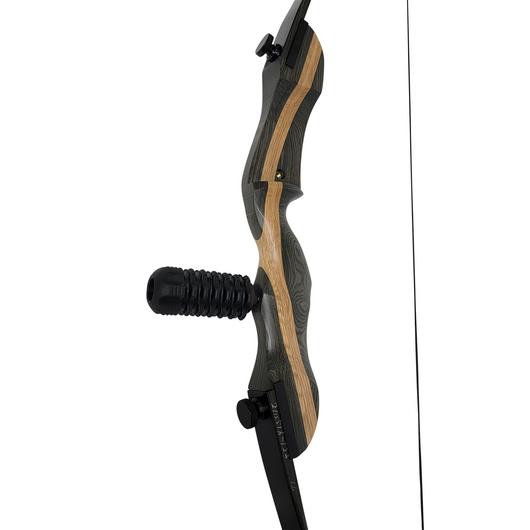Maximizing Your Archery Performance With the Right Substance Bow Stabilizer: a Comprehensive Overview
One often-overlooked yet vital element in boosting precision is the compound bow stabilizer. By understanding the subtleties of picking and enhancing a substance bow stabilizer, archers can tweak their tools to elevate their capturing experience to new degrees of proficiency and control.
Value of Bow Stabilizers in Archery

In addition, bow stabilizers assist in stabilizing the weight distribution of the bow, which can boost the archer's stability while intending and shooting. By adding weight to the front of the bow, stabilizers can reduce the amount of torque experienced upon launch, leading to a smoother and extra controlled shot - compound bow stabilizer. This weight circulation likewise assists in holding the bow constant for a longer duration, permitting the archer to aim extra precisely
Kinds Of Substance Bow Stabilizers
When taking into consideration the various kinds of substance bow stabilizers available, it is important to understand their unique features and functions to establish the most appropriate option for maximizing archery efficiency. The most common kinds of compound bow stabilizers include sidebar stabilizers, front stabilizers, and back stabilizers. Sidebar stabilizers attach to the sides of the riser and assistance in stabilizing the bow throughout the aiming procedure. Front stabilizers, additionally understood as lengthy poles, are affixed to the front of the riser and aid in taking in and minimizing any vibrations triggered by the release of the arrow, hence enhancing accuracy. Back stabilizers, also called back stabilizers, are mounted to the back of the bow and help in counterbalancing the weight of various other accessories, leading to improved stability and stable aiming. Furthermore, some stabilizers include adjustable weights that permit archers to make improvements the equilibrium and feeling of their bows according to their choices, making them flexible choices for archery fanatics of all degrees.
Variables to Consider When Choosing
In examining compound bow stabilizers, understanding the distinct attributes and functions of each kind is critical for making an educated decision on one of the most appropriate option to boost archery performance. When selecting a stabilizer, one should consider the weight of the stabilizer itself. While a larger stabilizer can provide more stability by decreasing the bow's activity, it might likewise my website trigger exhaustion throughout long shooting sessions. Equilibrium is an additional vital variable to contemplate. The stabilizer's size and layout considerably impact the bow's balance, affecting the shooter's capability to hold consistent objective. Furthermore, the material of the stabilizer can influence its performance. Carbon fiber stabilizers are light-weight and absorb resonances well, enhancing accuracy. The number and adjustability of dampeners on the stabilizer can adjust its performance by reducing noise and shock upon launch. By carefully reviewing these elements, archers can pick a compound bow stabilizer that straightens with their shooting design and maximizes their overall performance on the archery range.
Installment and Change Tips
For optimal efficiency and precision in archery, mastering the installation and modification of your bow stabilizer is essential. Proper setup starts with connecting the stabilizer to the bow's riser, ensuring it is firmly secured.
When readjusting the stabilizer, begin with tiny step-by-step modifications instead than extreme modifications. Pay attention to just how the bow reacts to changes in stabilizer setups and make modifications appropriately. Regularly check the stabilizer's rigidity and overall condition to guarantee it continues to work efficiently.
Maintenance and Care Standards

It is additionally important to store your bow with the stabilizer in a secure and risk-free place when not in use. Complying with these maintenance and treatment guidelines will certainly help you get the most out of your bow stabilizer and improve your total archery efficiency.
Verdict
Finally, selecting the appropriate compound bow stabilizer is vital for making best use of archery efficiency. Recognizing the importance, types, aspects to think about, installation and modification pointers, in addition to maintenance and treatment guidelines can greatly affect one's accuracy and consistency in shooting. By choosing a stabilizer that fits individual demands and preferences, archers can enhance their total performance and attain better results on the variety or in competition.
Bow stabilizers play a critical duty in enhancing an he has a good point archer's precision and consistency by reducing resonances and stabilizing the bow during the launch of an arrow Read Full Article - compound bow stabilizer.In addition, bow stabilizers assist in balancing the weight distribution of the bow, which can improve the archer's stability while shooting and aiming. The most common types of compound bow stabilizers include sidebar stabilizers, front stabilizers, and back stabilizers. Back stabilizers, also called back stabilizers, are installed to the back of the bow and assist in counterbalancing the weight of various other devices, resulting in enhanced stability and steady intending. When choosing a stabilizer, one have to think about the weight of the stabilizer itself